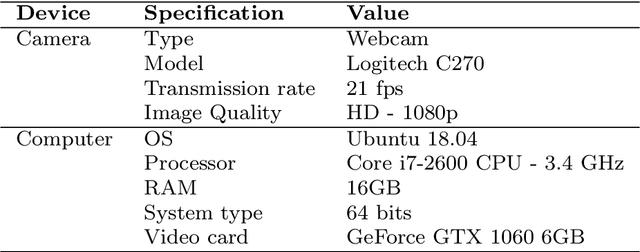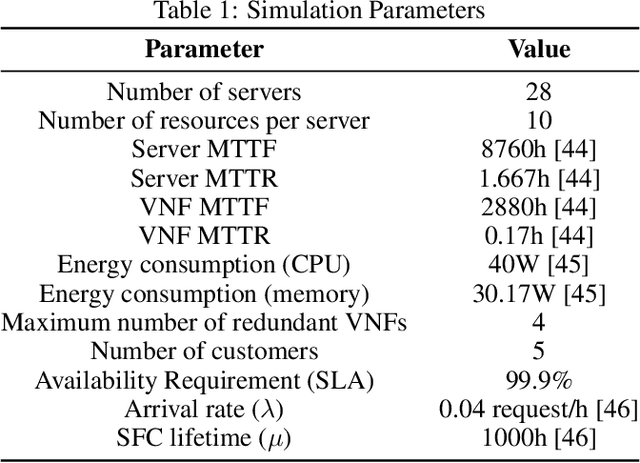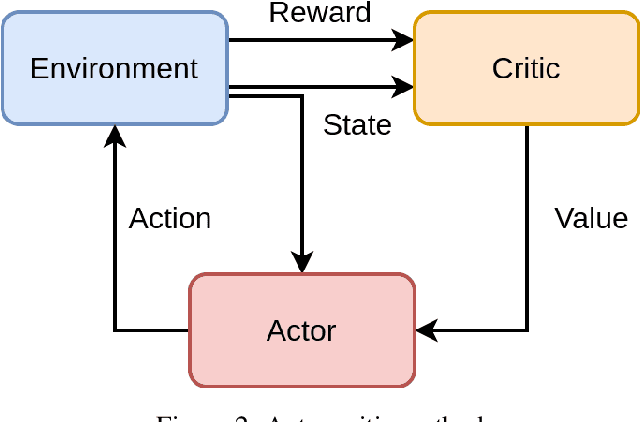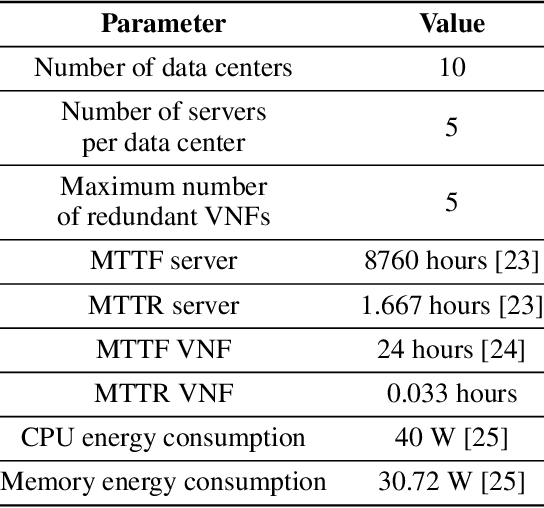Patricia Takako Endo
A framework for robotic arm pose estimation and movement prediction based on deep and extreme learning models
May 27, 2022



Abstract:Human-robot collaboration has gained a notable prominence in Industry 4.0, as the use of collaborative robots increases efficiency and productivity in the automation process. However, it is necessary to consider the use of mechanisms that increase security in these environments, as the literature reports that risk situations may exist in the context of human-robot collaboration. One of the strategies that can be adopted is the visual recognition of the collaboration environment using machine learning techniques, which can automatically identify what is happening in the scene and what may happen in the future. In this work, we are proposing a new framework that is capable of detecting robotic arm keypoints commonly used in Industry 4.0. In addition to detecting, the proposed framework is able to predict the future movement of these robotic arms, thus providing relevant information that can be considered in the recognition of the human-robot collaboration scenario. The proposed framework is based on deep and extreme learning machine techniques. Results show that the proposed framework is capable of detecting and predicting with low error, contributing to the mitigation of risks in human-robot collaboration.
The Greatest Teacher, Failure is: Using Reinforcement Learning for SFC Placement Based on Availability and Energy Consumption
Oct 12, 2020



Abstract:Software defined networking (SDN) and network functions virtualisation (NFV) are making networks programmable and consequently much more flexible and agile. To meet service level agreements, achieve greater utilisation of legacy networks, faster service deployment, and reduce expenditure, telecommunications operators are deploying increasingly complex service function chains (SFCs). Notwithstanding the benefits of SFCs, increasing heterogeneity and dynamism from the cloud to the edge introduces significant SFC placement challenges, not least adding or removing network functions while maintaining availability, quality of service, and minimising cost. In this paper, an availability- and energy-aware solution based on reinforcement learning (RL) is proposed for dynamic SFC placement. Two policy-aware RL algorithms, Advantage Actor-Critic (A2C) and Proximal Policy Optimisation (PPO2), are compared using simulations of a ground truth network topology based on the Rede Nacional de Ensino e Pesquisa (RNP) Network, Brazil's National Teaching and Research Network backbone. The simulation results showed that PPO2 generally outperformed A2C and a greedy approach both in terms of acceptance rate and energy consumption. A2C outperformed PPO2 only in the scenario where network servers had a greater number of computing resources.
Using Reinforcement Learning to Allocate and Manage Service Function Chains in Cellular Networks
Jul 06, 2020



Abstract:It is expected that the next generation cellular networks provide a connected society with fully mobility to empower the socio-economic transformation. Several other technologies will benefits of this evolution, such as Internet of Things, smart cities, smart agriculture, vehicular networks, healthcare applications, and so on. Each of these scenarios presents specific requirements and demands different network configurations. To deal with this heterogeneity, virtualization technology is key technology. Indeed, the network function virtualization (NFV) paradigm provides flexibility for the network manager, allocating resources according to the demand, and reduces acquisition and operational costs. In addition, it is possible to specify an ordered set of network virtual functions (VNFs) for a given service, which is called as service function chain (SFC). However, besides the advantages from service virtualization, it is expected that network performance and availability do not be affected by its usage. In this paper, we propose the use of reinforcement learning to deploy a SFC of cellular network service and manage the VNFs operation. We consider that the SFC is deployed by the reinforcement learning agent considering a scenarios with distributed data centers, where the VNFs are deployed in virtual machines in commodity servers. The NFV management is related to create, delete, and restart the VNFs. The main purpose is to reduce the number of lost packets taking into account the energy consumption of the servers. We use the Proximal Policy Optimization (PPO2) algorithm to implement the agent and preliminary results show that the agent is able to allocate the SFC and manage the VNFs, reducing the number of lost packets.
A Summary Description of the A2RD Project
Sep 06, 2018



Abstract:This paper describes the Autonomous Architecture Over Restricted Domains project. It begins with the description of the context upon which the project is focused, and in the sequence describes the project and implementation models. It finish by presenting the environment conceptual model, showing where stand the components, inputs and facilities required to interact among the intelligent agents of the various implementations in their respective and restricted, routing domains (Autonomous Systems) which together make the Internet work.
Theoretical Foundations of the A2RD Project: Part I
Aug 30, 2018



Abstract:This article identifies and discusses the theoretical foundations that were considered in the design of the A2RD model. In addition to the points considered, references are made to the studies available and considered in the approach.
Blockchain to Improve Security, Knowledge and Collaboration Inter-Agent Communication over Restrict Domains of the Internet Infrastructure
Aug 09, 2018



Abstract:This paper describes the deployment and implementation of a blockchain to improve the security, knowledge, intelligence and collaboration during the inter-agent communication processes in restrict domains of the Internet Infrastructure. It is a work that proposes the application of a blockchain, platform independent, on a particular model of agents, but that can be used in similar proposals, once the results on the specific model were satisfactory.
 Add to Chrome
Add to Chrome Add to Firefox
Add to Firefox Add to Edge
Add to Edge